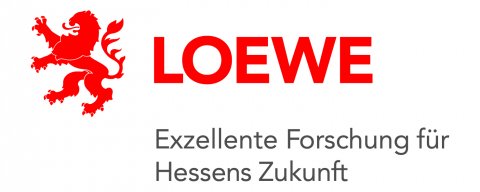Paper in particular offers excellent potential for biobased applications in the construction sector. It can be produced at low cost, consists mainly of renewable raw materials, offers very good strength properties based on its own weight, can be produced as a flat material but also with high porosity or even as foam and is relatively easy to functionalize chemically. For applications such as facade elements with high thermal insulation or as shell structural elements, however, today's products lack three-dimensional formability, compressive strength, weather resistance, long-term resistance and other properties. The aim of the LOEWE focus is to eliminate the remaining deficits with regard to the basic principles, to exploit synergies from the disciplines involved and to develop a systematic development methodology along the material processing chain. This requires new design approaches for industrial production and individualisable shaping, familiar material properties must be adapted to the new requirements and further developed, suitable characterisation methods developed and material data generated. This will make it possible to use scientifically proven methods to design new paper structures that are suitable for materials, production and use.
Components made of paper and paper composite material are to be designed in such a way that the materials can be recycled as much as possible after the end of the building's useful life. The PMV has developed methods for determining the recyclability of paper. These methods will be transferred to the components and assemblies to be developed. Essential questions are to ensure the separability of paper and other materials (metal, plastic), to find suitable processes and process conditions for the defibration of the paper components and to overcome the difficulties which arise due to the chemical functionalisation of the paper fibres to increase the wet strength. The investigations on recyclability are carried out with the components and assemblies developed in subprojects 4 and 6. The results flow back to these subprojects so that, if necessary, technical production and design measures can also be taken to improve the recyclability.
For construction applications with paper, only very few specifically designed and manufactured papers are used today. Papers for construction applications, such as gypsum plasterboard or honeycomb boards, are typically made from recovered paper. Common liners or testliners from packaging applications are often used, which are not at all or only to a limited extent optimized for construction applications in terms of fiber properties and sheet structure. The potential of paper as a building material is therefore far from exhausted today. This applies both to the mechanical properties, such as the load-bearing arrangement of the fibres, and to the functional properties, such as moisture resistance and flame retardant properties. The characterisation of papers today is typically carried out with methods and characteristic values which are not sufficient for the design of components and buildings as well as for corresponding dimensioning and modelling methods. These gaps are to be closed within the framework of this subproject and papers optimised for building applications are to be produced and characterised.
The paper materials are characterized with paper-technological test methods, whereby the mechanical properties are in the foreground. These measurements help on the one hand to understand and optimize the processes of paper production, on the other hand the material properties flow into the modelling of the forming processes (subproject 4) and the structure analysis (subproject 5). The known characterization methods will be further developed in such a way that the obtained material properties can be used for modelling the forming processes, structural analysis and component and assembly design. In particular, the boundary conditions and the test parameters for the measurement methods known in principle shall be adapted for this purpose.
Papers with predominantly isotropic strength properties in the sheet plane are likely to be required for shell- or plate-shaped components. The first investigations on the production of components (subproject 4) and assemblies (subproject 5) show which parameters need to be further optimized for this application. From today's point of view, in addition to a high breaking strength, a high stiffness and a high ductility will also be required. Within the scope of this work package, the mentioned properties of papers will be further developed on a laboratory scale in order to meet the requirements for the planned components and assemblies. Model-supported empirical work is carried out. Multilayer sheet structures can also be used to achieve high stiffness. A pilot paper machine from the paper industry (web width approx. 30 cm) is available at the Department of Paper Manufacturing and Mechanical Process Engineering in order to be able to produce semi-finished paper products for the production of components and assemblies on a somewhat larger scale.
For rod-shaped components, papers are required which have the highest possible tensile strength in the longitudinal direction of the rod. The targeted orientation of the fibers in the sheet can make a significant contribution to this. On conventional paper machines it is possible to influence the fiber orientation, but only to a limited extent. For the production of highly unidirectionally oriented papers, a laboratory plant based on the work of Kortschot is currently being built and tested. This is being further developed in such a way that a higher fibre orientation and thus a considerably higher relative tensile stiffness in the longitudinal direction is possible. Thus, the potential of unidirectionally oriented papers can be demonstrated and a relationship between degree of orientation and strength values can be determined.










